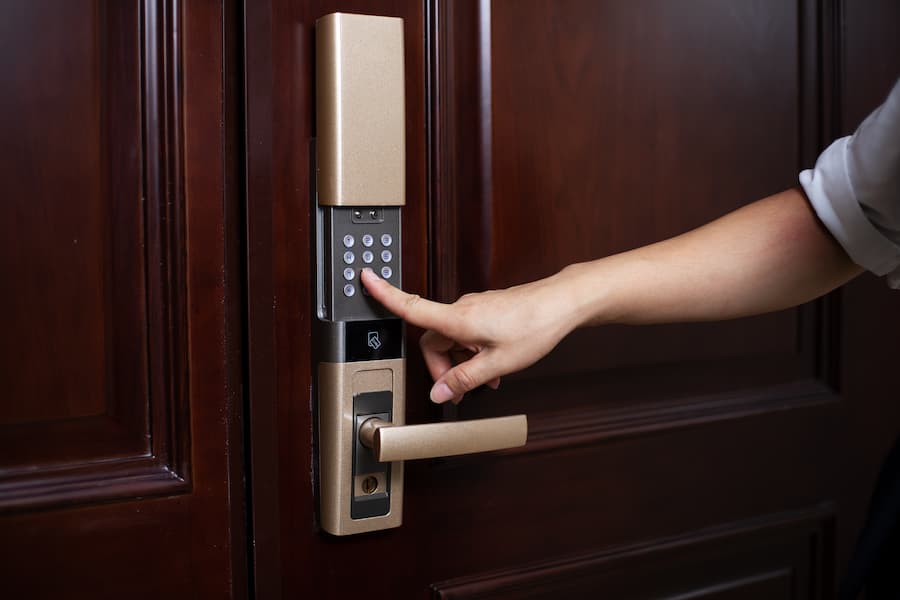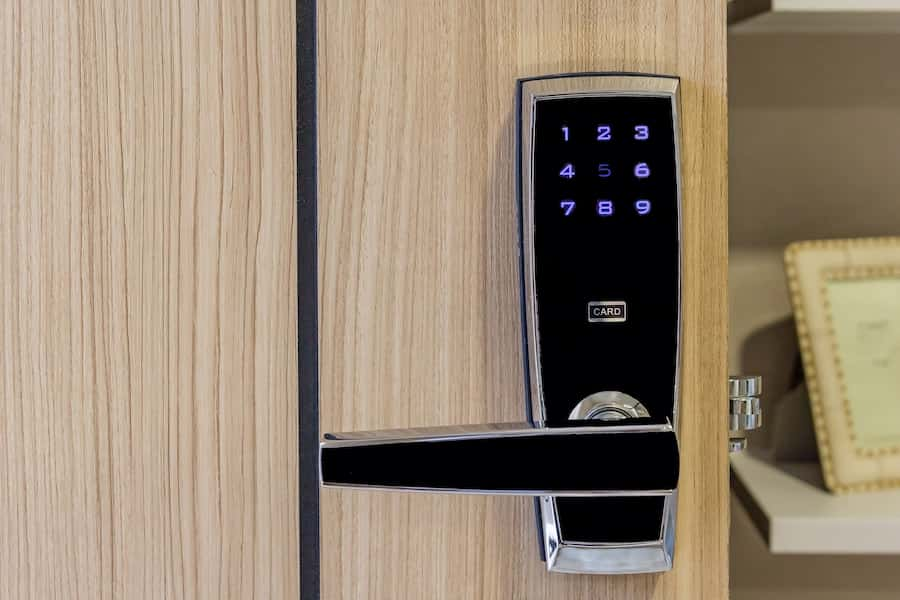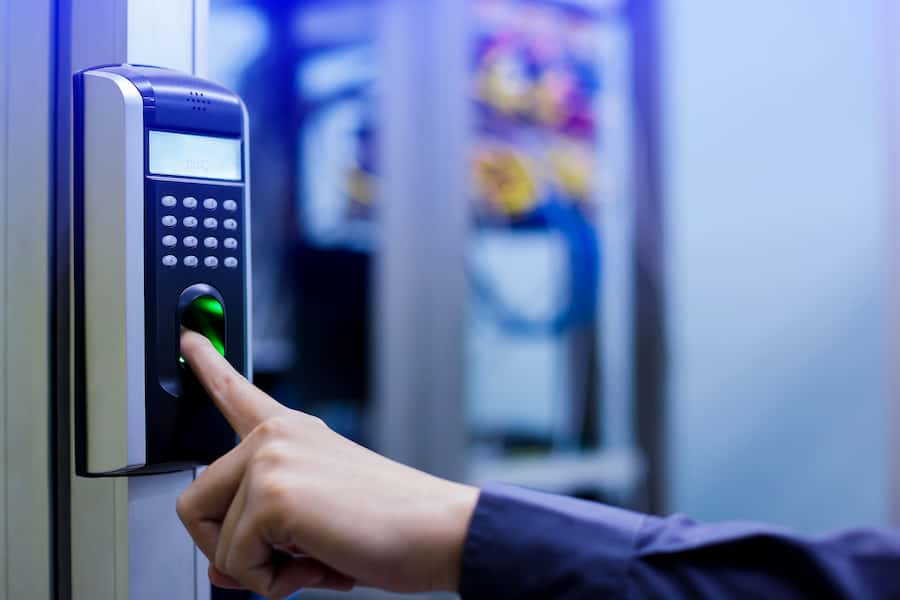
Your keypad lock is not working. So, how do you fix a keypad lock quickly and on a budget so you don’t compromise your safety or lose precious time?
Here, we explore the topic of fixing keypad locks in detail. We not only answer the question of how to fix keypad locks, but we also discuss if this is a task that you should be doing yourself or if you should entrust it to a specialist.
Let’s get started. But first things first. Why would you need to fix your keypad lock in the first place?
3 situations when you need keypad lock repair
- The keypad lock doesn’t respond to the code you enter.
- The door doesn’t open all the way through when you input your keypad lock code.
- The keypad is jammed and it’s difficult to input the numbers.

How do you fix a keypad lock – tips and tricks
- Test the lock before detaching it from the door/wall
Sometimes, your keypad lock may fail to receive or recognize the electronic instructions that tell it to open or close. When this type of technical issue happens, the lock doesn’t respond even though you key in the correct number.
But usually, this issue does get resolved if you try the lock a few more times. So, key in your access code into the keypad lock a few times in succession and see if it works. - Replace the battery in your keypad door lock
In some cases, your door lock may not be working because the battery is out of juice. In such cases, just unscrew the back panel of the keypad lock and access the battery that sits on the battery holder. Detach the battery from the terminals and replace it with a new one. Fit the back panel of the lock back on using screwdrivers. - Remove any dirt or debris that’s lodged inside the keypad lock
If your keypad lock is outside the building, it will certainly be exposed to the elements and pollution. This dirt and debris may settle inside the keypad lock – either between the keys or in between the base panel. This can be why your lock fails to recognize your code or why your keys seem jammed.
In such cases, it’s best to detach the outer layer of the keypad lock (where the handle/knob is located) and use a compressed air blower to dislodge the dirt. You should do the same to the back portion of the keypad lock by unscrewing the back cover and using the air compressor on the base panel. - Defrost the moisture inside the keypad lock
Although most modern-day keypad locks are waterproof, long-term exposure to rain or moisture can create problems. However, there is a quick fix for this. All you need to do is use a screwdriver to remove the lock from its place. Access the internal components. Then use the compressed air blower or a blow dryer on gentle pressure to dry the moisture within.
Once the moisture is gone, put the lock back onto the door. - Push the spring-loaded pin back into place
Sometimes, the problem may not be with the keypad, but with the way the deadbolt inside the lock functions. In some cases, overuse of the lock can make the spring-loaded pin fall out. This can affect how the deadbolt disengages.
To put the pin back into place, you’ll need to remove the keypad lock completely off the door. Start by unscrewing the back plate and the base panel. Then use the screwdriver to take off the front portion of the keypad lock as well.
Once you have taken the lock off, place it on the table and closely examine the internal components. There you will see various internal mechanisms that power the keypad lock’s functions. Carefully check if the pin has fallen off or is dislodged. If it has, put it back into place. Additionally, check if the deadbolt has got jammed too and push that back into place as well.
You can then fix the keypad lock back onto the door.
Should you do keypad lock repairs yourself?
Fixing the keypad lock might seem an easy task. But if you’re not careful, you may end up making the problem worse. For example, the first thing you need to do before your fix your lock, is to identify what the problem is.
If you’ve never worked with keypad locks before, you won’t know the technical nitty-gritty issues. You may end up doing something completely unnecessary and this won’t fix your lock problem, but will waste your time.
Even if you identify the correct problem, you may still not know how to correctly implement the above fixes we have suggested.
So, instead of spending so much time and effort into fixing your keypad lock, only to have it get damaged further, why not seek expert assistance?

Speedy Locksmiths can help
At Speedy Locksmiths, we are a premier emergency locksmith located in Kansas City. We have extensive experience providing keypad lock repairs to homeowners and business people.
If you have any problem with your keypad lock, feel free to contact our specialists immediately. We offer emergency on-site keypad lock repairs. Our team will visit your property, identify the problem, fix the issue and restore your keypad lock into working condition. Our prices are highly competitive and budget-friendly.
If your keypad lock is beyond saving, we can quickly replace your lock and ensure your safety and efficiency isn’t compromised. So, now the question of “how do you fix a keypad lock?” shouldn’t even arise. Just give us a call and let us take care of the problem.
Mobile Locksmith Service Areas
- Mobile Locksmith Merriam
- Mobile Locksmith, Prairie Village
- Mobile Locksmith, Olathe
- Mobile Locksmith, Leawood, Kansas
- Mobile Locksmith, Overland Park
- Mobile Locksmith, Lenexa
- Mobile Locksmith, Shawnee
- Mobile Locksmith, Mission
- Mobile Locksmith, Kansas City, KS
- Mobile Locksmith, Kansas City, Missouri
